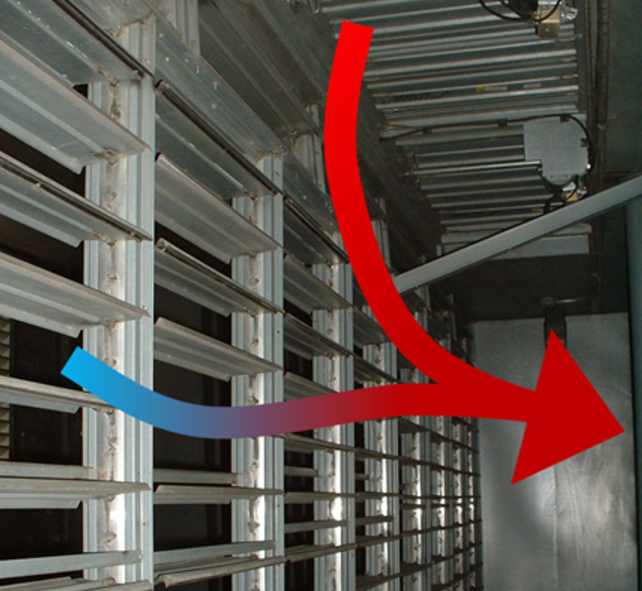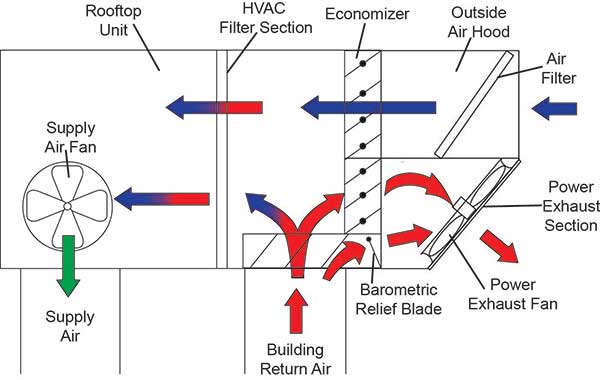Get Tech Tips
Subscribe to free tech tips.
Ain’t No Fooling With Free Cooling (Tales of the Economizer)
This article was written by Gary McCreadie from “HVAC know it all.” You can learn more about Gary and his tips and growing community on Facebook and LinkedIn.

What is an economizer? Simply put, it is a mechanical device designed to reduce energy consumption, whether it be fuel, electricity, or other. According to Wikipedia, the first economizer was patented by Edward Green in 1845. Green used it to increase the efficiency of stationary steam boilers.
This article will revolve around air-side economizers. You will typically see them as an accessory built into rooftop units for the purpose of “free cooling.” Free cooling is a funny term because it's not actually “free;” the fan motor and economizer controls must be powered in order to operate, which consumes energy. The term merely demonstrates that less power consumption occurs because we are utilizing outdoor air to cool a space rather than a compressor or compressors. Economizers also offer the added feature of providing fresh air to the building and its occupants. A carbon dioxide sensor can be integrated into the setup. As CO2 levels increase within the building, the outdoor air dampers are commanded to open, filling the space with fresh air. As CO2 levels drop off, the dampers return to their minimum position.

The Guts of an Economizer
The economizer setup employs several parts to operate correctly.
1) A set of outdoor air dampers that are directly linked to the return air dampers are used to control airflow. They move together as one; as the outdoor air dampers begin to open, the return air dampers begin to close, and vice versa.
2) An outdoor air sensor responsible for determining if the outdoor air is acceptable for free cooling. In most cases, there will be an option between a sensible temperature sensor or an enthalpy sensor.
- Sensible Temp Sensor – Measures dry-bulb temperature of the air.
- Enthalpy Sensor – Measures heat content within the air measured in BTU/lb. This sensor takes dry-bulb temperature and wet-bulb temperature into account for total heat content.
3) An indoor air sensor that reads sensible temperature and maintains mixed or discharge air temperature. The damper assembly will modulate according to feedback from this sensor to maintain a pre-determined mixed or discharge air set point. For example, on newer economizer controls, like the Honeywell Jade, you can set the mixed or discharge air temperature as desired.
4) The damper actuator receives a signal from the economizer control board and moves to the assigned position to maintain the mixed air or discharge air set point.
5) When using free cooling, you must remember that you are introducing fresh air. This added air into the space can cause positive pressure issues within a building. To alleviate this problem, economizers, in most cases, will have a built-in barometric relief damper or power exhaust system.
6) The control board is the heart and soul of the operation. The control board receives sensor input signals, internally calculates the next step, and relays the output signals to the damper actuator and power exhaust motor if it's utilized.
Order of operation
To keep it simple, we will base the following example on a single-stage cooling rooftop unit complete with an economizer package.
The Y1 terminal will be powered on a call for cooling from the thermostat or BAS (building automation system; you can listen to a podcast about building automation basics HERE). In most cases, the signal will first move through the rooftop control board and over to the economizer control. At that point, the economizer control will then decide whether to proceed with free cooling or mechanical cooling based on the outdoor air conditions, either using the sensible temperature of the air or the heat content of the air measured in enthalpy.
If the outdoor air is not suitable for free cooling, the control signal will then be relayed back to the main control board of the rooftop and initiate mechanical cooling (compressor operation). If the outdoor air is suitable for free cooling, the outdoor air dampers will modulate from their minimum position (the damper's minimum position is set up during commissioning to maintain constant fresh air to the building and occupants) to maintain the mixed air or discharge air setpoint until the space temperature is reached. Once the thermostat or BAS has been satisfied, the call for cooling will cease.
Most air-side economizers, in general, work as explained above. It is best to contact the manufacturer of the equipment you are working on for technical advice or when issues about that system arise.
—Gary McCreadie – HVACKNOWITALL.com
P.S. – The HVAC School podcast also covered economizers in an episode with Jerry Eavenson, which you can listen to HERE.
Here is Honeywell's technical reference manual for their economizer controls.











Comments
To leave a comment, you need to log in.
Log In